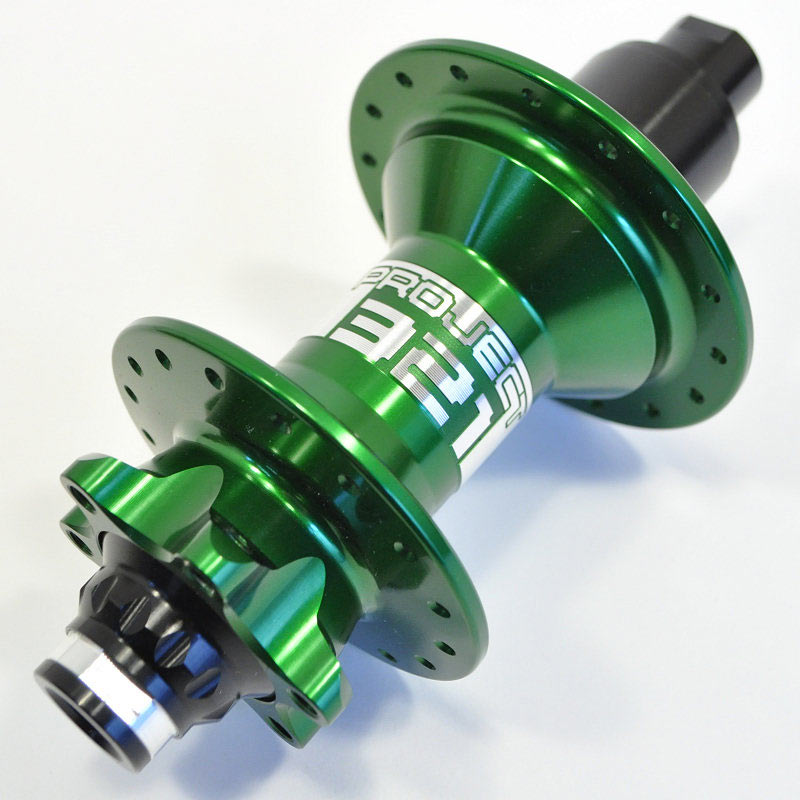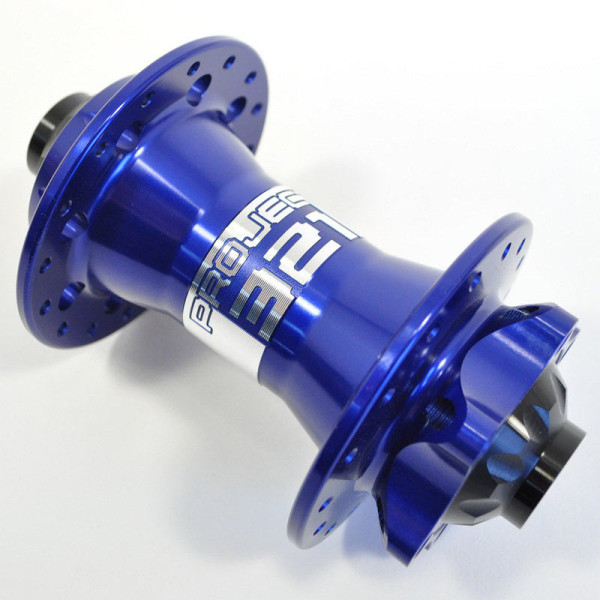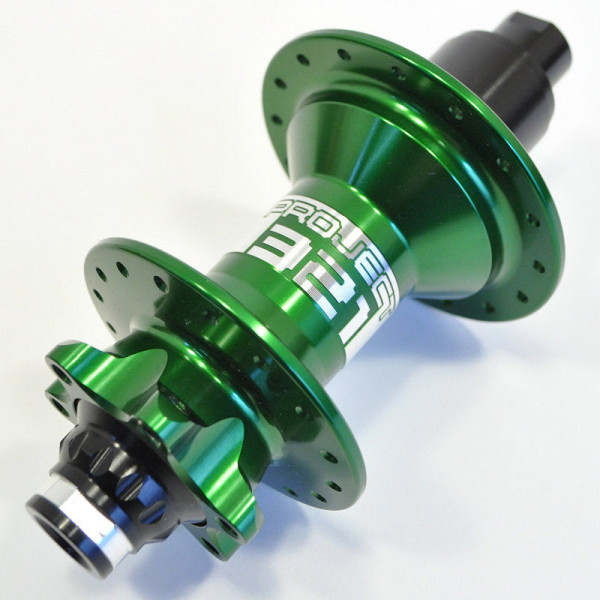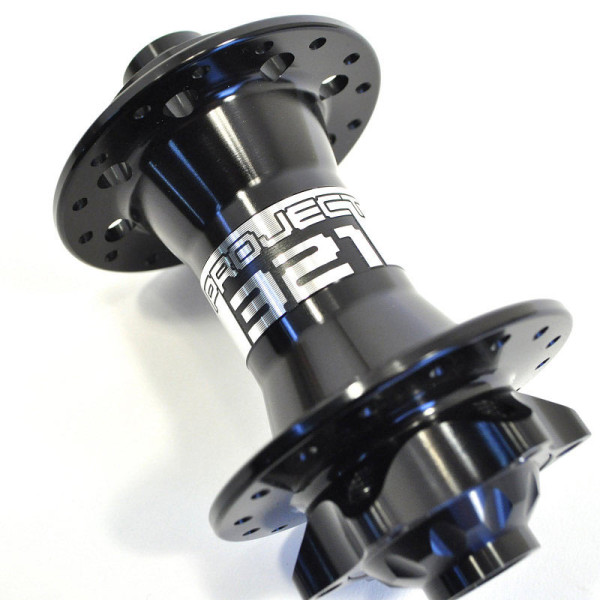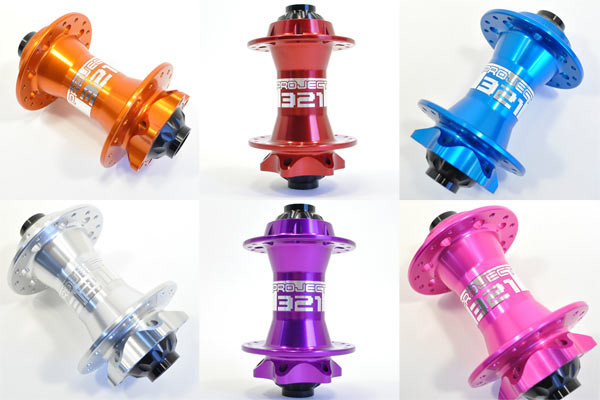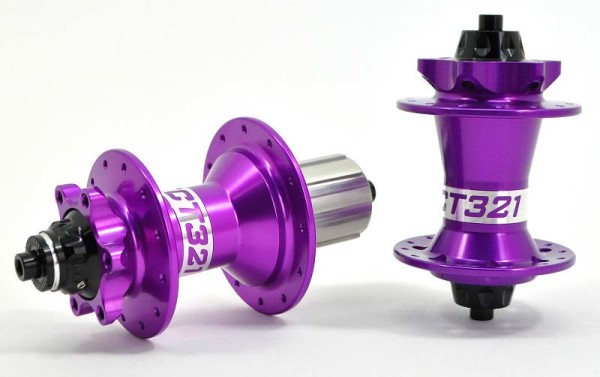To take advantage of a Boost frame or fork, most hubs usually grow by 6mm in the rear and 10mm in the front. Project321’s new Boost hubs’ shells do just that, but they left some of those gains on the table when moving the flanges.
“Everyone’s just taking the extra 10mm and pushing the flanges out by 5mm per side,” says Jake Lyles, Project321’s product designer. “But, on the front, we kept the right side where it was and only pushed the left (disc brake) side out. That means the flanges only spread by 5mm. So the bracing angle on the right didn’t grow like it would on some other hubs, but this gave us a more even angle on both sides. Just because we could take the full 10mm, we didn’t necessarily think we should.”
Here’s why that matters…
Besides evening out the spoke angles, Jake says they also paid attention to the angles at which the nipples sit in the rims -especially carbon rims- and now they can create an almost dishless wheel. For example, on the Nox Composites Skyline 29er carbon rim with a 2x lacing on a front wheel, he says the bracing angles are 6.3º and 6.0º – virtually identical, and with 96%:100% tension ratio. It actually moves the steeper side to the non-disc side.
On the rear, they left the disc side flange where it was and moved the driveside flange out 3mm wider. The reasoning is the same, and it let them machine a little extra material off the shell between the non-drive side flange and the rotor mounts.
Jake pointed out that their flanges are angled such that, in most wheel builds, the spoke doesn’t touch the flange other than the spoke head and where it’s poking through the hole.
Other than that, the Boost hubs are essentially the same as the originals, with one small tweak: The logo is new, and it’s etched into the body rather than a decal or print. They’re available in the full range of colors, and there’s no longer any special order or upcharge for the pink, purple and other fancy hues…it’s all available as standard and (according to Jake) usually in stock.
We’ve been running P321’s G2 hubs on our Project XC Race Rocket hardtail with great results, and we’ll soon be swapping in this new Boost front with the new Lauf Trail Racer V2
In other news, their single speed rear hub has switched from the standard Industry Nine freehub body they’d been using to the new Torch FH design, which they say dropped ~60g off their singlespeed rear hub.
They’ve also got new Lefty 2.0 hubs that’ll fit the new Lefty 2.0 and Lefty SuperMax forks, which has wider flange spacing to create a stiffer wheel.
The new CX ISO hubs also get the new I9 Torch freehub bodies, this time with an 11-speed width to accommodate modern road cassettes. They have half the engagement as their mountain bike hubs (60 versus 120) thanks to using half the pawls (3 versus 6), which was mainly done only because that’s how it’s offered from Industry Nine. Drillings are offered in lower spoke counts than MTB, letting you choose between 20, 24 and 28 on the front, and 24 or 28 on the rear.
